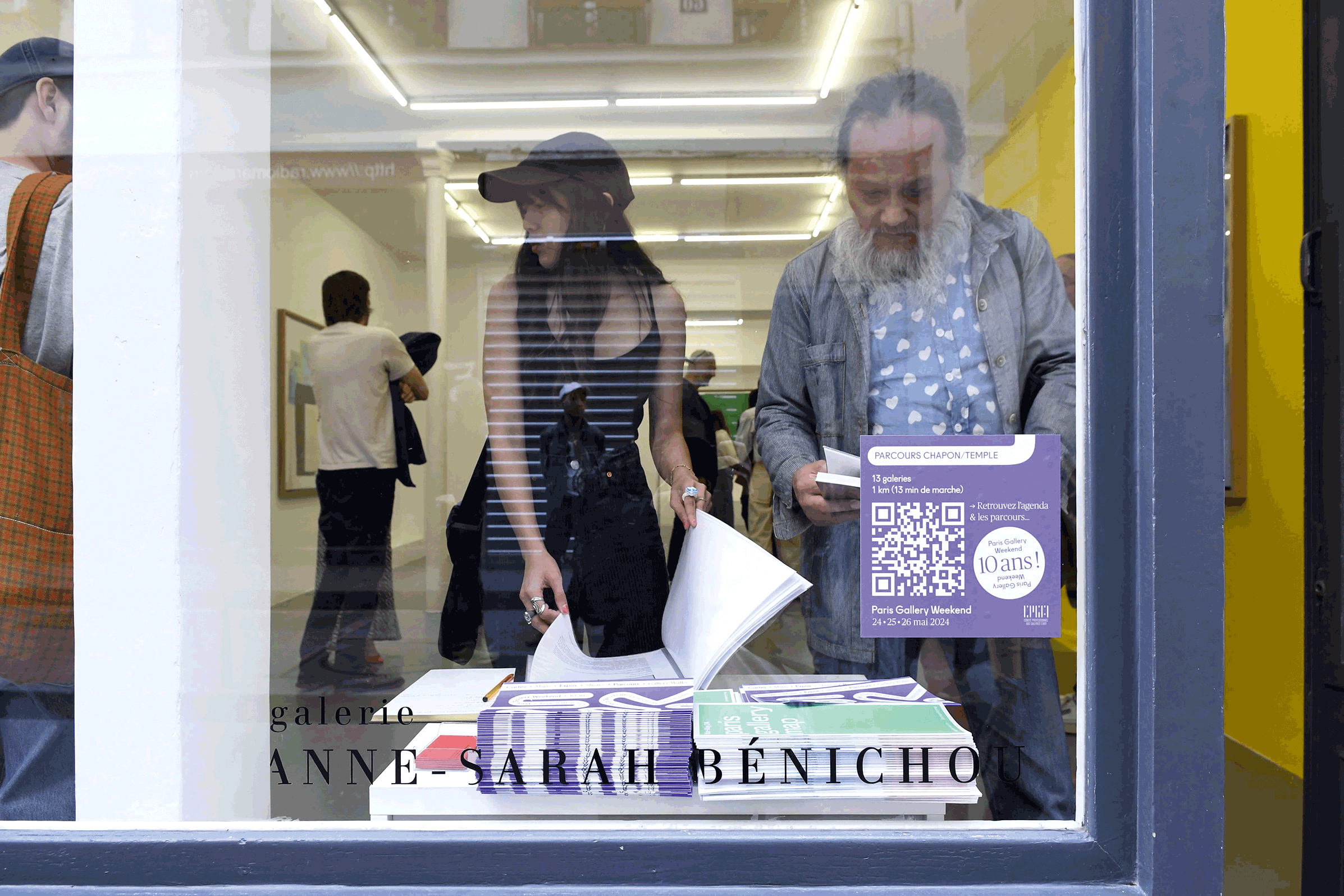Paris Gallery Weekend was structured around seven walks that featured more than 100 participating commercial galleries and non-commercial institutions
Photo: Francesca Avanzinelli
“It’s a party!” exclaims Florence Bonnefous, a board member of Paris Gallery Weekend and a co-founder of suburban Romainville’s tastemaking Air de Paris gallery, of the former’s tenth-anniversary edition. Staged from 24-26 May, the event featured more than 100 participating commercial galleries and non-commercial institutions in and around the French capital, offering visitors access to art and artists from around the world. The programme celebrated not only the Parisian art trade’s growth but also its endurance amid numerous existential challenges.
“I’m proud that we’ve lasted this long,” says Marion Papillon, the founding president of Paris Gallery Weekend and the owner of Galerie Papillon. “It takes a lot of energy to bring galleries together, and a lot of time to allow an event like ours to stand out in the cultural calendar of Paris.”
Paris Gallery Weekend has undergone significant changes in the past decade. Although it is now a city-spanning exploration of dealerships and institutions, the first edition, staged in 2014, consisted of a single group show of artists nominated by their respective galleries. This year’s iteration retained something of that initial concept through an initiative called Cartes Blanches, in which a dozen dealers invited curators to organise exhibitions of whatever they desired in their galleries.
Since 2018, however, Paris Gallery Weekend has been defined by its organisation around “gallery walks”: routes designed to guide visitors to groupings of spaces within neighbourhoods whose density of art offerings might otherwise feel overwhelming. Among the seven gallery walks featured in the event’s purple map of Paris this year, four were situated in the Marais, which has become the heart of the city’s primary market. Together, the quartet could be combined to form a circuitous route from the Place de la République to the Île-Saint-Louis that connected around 55 participating galleries—nearly double the citywide number that took part in the inaugural Paris Gallery Weekend.
From youthful to tweedy
Crossing the Seine, the youthful, future-facing energy of the Marais is replaced by a tweedier, more classical focus in Saint-Germain-des-Prés, the historic gallery neighbourhood centred on the secondary market. Yves Zlotowski, a Paris Gallery Weekend board member and the director of Galerie Zlotowski, which specialises in Modern art, says this segment of the market typifies the broader resilience of Paris’s private trade.
“Modern art was a sector that was suffering,” he says. “The competition from fairs and auction houses was brutal. But in recent years we’ve experienced a comeback.”
Parisian dealers’ collaborative, perhaps even collectivist, mentality has been pivotal to this resurgence, and many of the gallery weekend’s organisers stress how vital that mentality has been to the event itself. “It’s important that galleries come together, as we are otherwise at the mercy of big events like the fairs,” says Isabelle Alfonsi, another Paris Gallery Weekend board member and the director of Marcelle Alix gallery in Belleville. “We’ve also made it much cheaper to participate.”
“Our organisation is like a labour union,” Papillon says. “We defend the interests of galleries, communicating with politicians and the representatives of other parts of the art ecosystem, such as art critics and museum workers. We [support] gallerists in understanding juridical questions, taxes, rules, regulations and things of that nature.”
Anxiety versus excitement
Despite the festivities and solidarity, recent developments in the global art market have provoked some apprehension among locals. The arrival of Art Basel epitomises the concerns over the globalisation and professionalisation accelerated by Brexit and the Covid-19 pandemic. The Swiss art fair juggernaut controversially supplanted the long-running Foire Internationale d’Art Contemporain (Fiac) from its October slot at the Grand Palais in 2022, making Art Basel Paris (briefly known as Paris+ par Art Basel) the City of Light’s premier fair. Several international dealers have either opened or expanded permanent Parisian spaces of late, too, including no fewer than four mega-galleries: Hauser & Wirth, Gagosian, David Zwirner and White Cube.
Paris Gallery Weekend not only allows smaller dealers to compete or integrate with the big international brands absent a decade ago; it also promotes the local scene’s growing diversity and democratisation. For example, a gallery specialising in Chinese Sots art (socialist Pop art) adjacent to a gallery run by the ultra-conservative Falun Gong religious sect—neither of them participants in Paris Gallery Weekend—could nonetheless be found along one of the gallery walks. The purple guide also led visitors to magical, homegrown spaces hidden in obscure alleyways, behind nondescript doors, through a series of verdant courtyards and up flights of stairs. Among these outliers was Galerie Cipango, which specialises in bringing together paintings and jewellery. Situated on a quaint side street, it looks and feels less like a dealership than like the home of Sylvie and Christophe Tissot, the artists and owners who greeted visitors to their exposed-beam-ceilinged space by sitting them on stools, offering them fruit juice and regaling them with stories about the Parisian art scene of the 1970s and 80s.
Excitement and anxiety about forthcoming changes are evident in Paris’s gallery scene, with this summer’s Olympic Games and the slow but steady urbanistic expansion known as “Le Grand Paris” looming large. But Bonnefous’s focus on the future is resolute: “I’m thinking about the colour of the next brochure. I think we’ll go with pink next time.”

